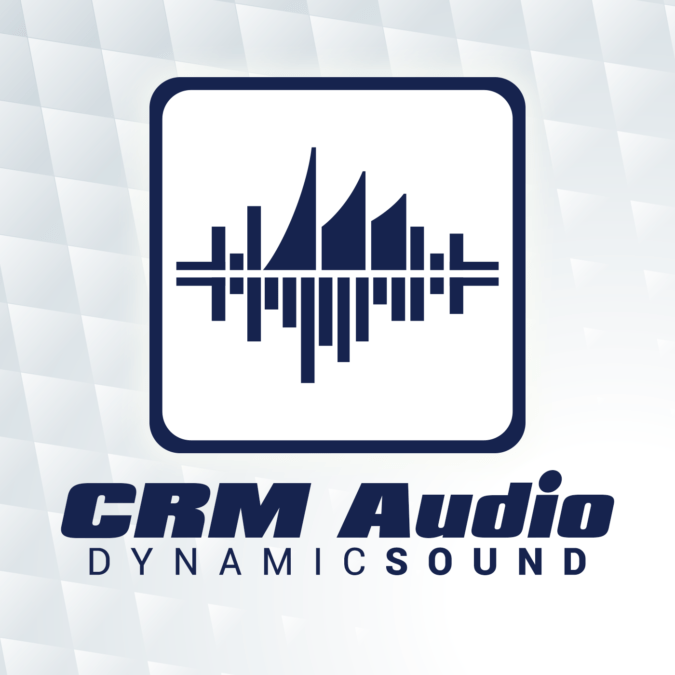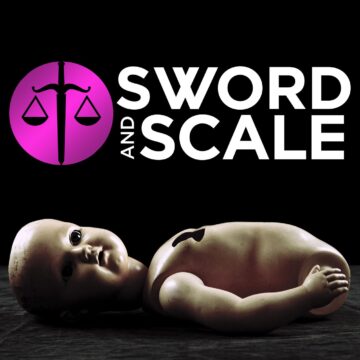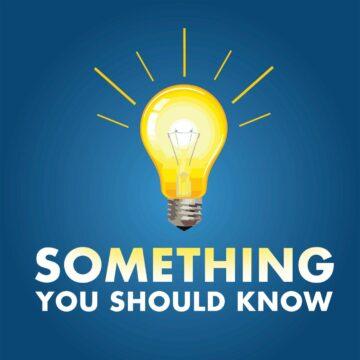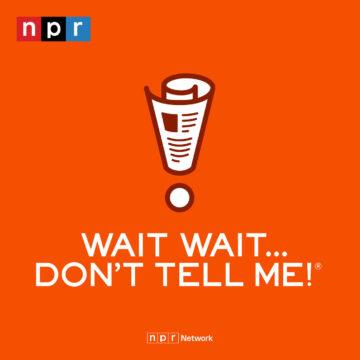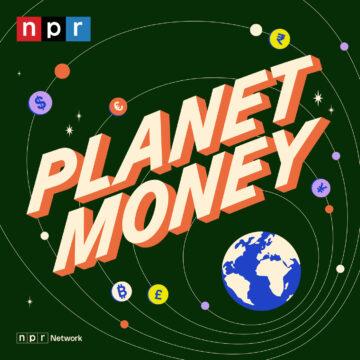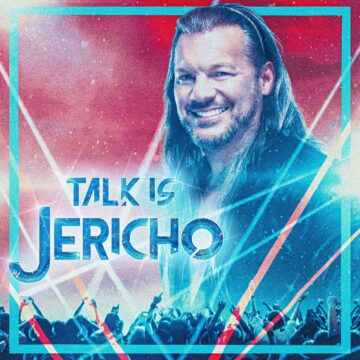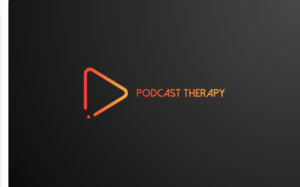This episode is brought to you by Inogic. Check out their new Kanban visualization for Dynamics 365 and Power Platform.
Learning is important. Joel has started a bi-weekly LinkedIn newsletter about learning–why it is important to be a life-long learner, choosing a learning goal, and tools to help learning. On the podcast we discuss our learning goals. Matthew Anderson has also been pursuing certification, and he talks about his strategies for learning and test-taking.
Other topics in the episode:
- Smart pens: Neo Smart pen and Moleskine Pen +. https://www.amazon.com/smartpen-N2-Bluetooth-Digital-Smartphones/dp/B00ST8GT8W/ref=sr_1_4?keywords=Neo+smartpen&qid=1582039395&sr=8-4
- Edge collections: https://blogs.windows.com/msedgedev/2019/08/20/collections-now-available-microsoft-edge-preview/
- Microsoft certification poster that shows the intersection of all Microsoft certifications: http://aka.ms/TrainCertPoster
- Taking certification exams: how to read the questions and scenarios to optimizing finding the correct answers.
- Going to testing center vs. online proctored exams
Show notes:
[00:00:23] And Matthew. How are you doing day, Joel?
[00:00:27] I am excellent. Welcome to 2020.
[00:00:29] A little bit late in a little bit. Yeah, yeah. But we’ve been so productive we haven’t had time for a podcast.
[00:00:36] Exactly. it’s prioritization. And I think we both had that silent agreement that we have some things we’re focused on right now.
[00:00:44] Well, actually, last week on my My Analytics for the first time I hit 42 percent of time for focus.
[00:00:53] Oh, congrats on that. I feel like I’ve graduated to new level.
[00:01:00] Yeah, I can say I have that much focused time scheduled. I am not hitting it, but I am getting more and more people to respect that time that I’ve got out there. So it’s a it’s a process. We’ll say that.
[00:01:17] Right. So I’ve been putting a focus for 2020 on learning, trying to get some certifications as well as learn some other other things. I find that, you know, sometimes you get a little stale and you need to update your skill set, especially working with technology. You can do anything with learning in 2020.
[00:01:37] Yeah, absolutely. So the most recent certification I earned is the Azure A.I. Engineer Associate Certification.
[00:01:47] That’s the A.I. 100. It was the exam. The core exam behind that one.
[00:01:53] So is this like super deep data science stuff for what is it?
[00:01:58] So it is a collection of cognitive services, including language, understanding and prediction, translation, and getting into machine learning pipelines. And how do you actually build and structure those services together to be able to meet the need for some sort of end user use case?
[00:02:22] Cool. So what what made you decide on that one versus all the other many things you could study?
[00:02:31] Yeah, so I had a stretch goal for myself around kind of getting outside of the business applications kind of silo within our product cloud, the different solution areas, I wanted to do something in Azure and I looked toward what are those things that are that I talk about the concept of in the biz app platform a lot, but I’d like to be able to go deeper and, you know, chat with folks about what’s going on behind the scenes, talk intelligently around what some of those capabilities are and what really comes up a ton. Is these things around cognitive services and kind of improving those experiences using prediction automation around that. So it seemed like a really good fit. And then with the advent of the A.I. Builder Capabilities and power platform and some of what we have inside of customer insights and being able to make predictions about this kind of super set of information about customers, it just seemed like a really appropriate place to put some of that learning effort into.
[00:03:43] Definitely a hot area there. So how much time did you allocate to preparing for it?
[00:03:53] Yeah, so I have had this on my radar for about the last four and a half, maybe five months. I’ve been trying to go through some of the Microsoft learn capabilities or rather the learning paths that they have around that just to get familiar. But I really got serious about it when I put the I put my money where my mouth was and I scheduled the certification exam two months out. So it was mid-December. I made the decision to schedule it out for middle of February or rather early February. And just kind of use that as a way to pressure myself and really ratchet up the prep and training work that I was doing. And labs. Yeah.
[00:04:41] So that’s that’s key, I think. And I’ve been I’ve been writing a series of Linked-In articles about learning, because my focus has been on that since last year. I got the sales and customer service and marketing Dynamics 365 certifications and he first power platform certification. I didn’t have to study at all for those because I’ve been doing it so long that I could just walk in and pass, maybe with just a cursory review, but the one I haven’t had is field service because I just don’t have as much experience with field service. I’ve dealt with it and worked with it. But I’ve never I’ve never taken the certification test on it before. So that was sure that was my goal. And my goal with this is just to broaden my reach outside of the normal projects that I work with. So with (the field service exam), that was kind of the first one I really had to study. And like you, I set myself a pretty aggressive goal of actually scheduling the exam. You put some teeth behind it. I’ve got people that are on my team or my mentor and they set a goal that “I want to get certified in xyz,” and then they never do it because they don’t have a date. You got to have a date.
[00:05:59] What was going through my head the night before the exam, I was just panicking and saying I don’t know if I’m actually ready. I went in and I was one click away from canceling the exam that I had for the next day. I didn’t. Partially because I don’t want to pay twenty two bucks to cancel this within the window. It’s like five business days or something like that. You know what? I’ve done this much. I’ve put in the effort and I go take it even if I don’t feel 100 percent ready. And I came out on the other side feeling pretty glad that I didn’t spend the money to defer on something or I was going to pass it anyway.
[00:06:50] Right. I think when you take the more of those exams you take, you kind of recognize patterns. Not that taking more exams makes you more likely to pass another one, but it could. I’ve developed my own approach to taking a certification exam that helps me be more sure that I’m getting closer is the right answer. Doesn’t always give me the right answer, but it gets me closer. I read the question backwards because the questions generally are set up with a scenario and a question. So the question is last and sometimes the scenario gives you extra details that you don’t really need. So if you read the question, read it backwards. Read the bottom section to get the questioner and then look for the details in the scenario. You can be a lot more focused and avoid having the extra details throw you off. And then look at the scenario and then I look at the answers. And if it’s not if I’m not really, really, really sure of which one’s the right one, I start weeding out the distractors, and those are the ones that aren’t right. And if you can weed out the ones that you know aren’t right, then you have a 50/50 chance and then you can pretty much narrow down if you if you have a cursory knowledge of the topic.
[00:08:26] I have a variation on that approach that I use quite a bit. And I think that definitely that that concept of narrowing down the field of possible answers to what’s important and also not getting hung up on a bunch of potentially extraneous information is really important. And that’s consistent even on the exam that I just took here recently, as well as certainly some of the dynamics ones that I certainly know well, just given my history with the platform and most of those questions you can get rid of to maybe sometimes three and you barely have to read the whole range of what it’s going to be.
[00:09:18] And the new ones have introduced case studies, which is sometimes a lot of text to then get to the questions. And that can be kind of intimidating. You have, you know, the scenario, the requirements, the details. You’ve got half a dozen different tabs on that thing. Then you have questions. Here’s one thing I found is on the and this is this is for the what is it Pearson view or whatever Microsoft uses for the testing centers as well as the proctored exams. You can ctrl+f to search the text. That’s a little tip I found to where if you have a question about “what should the sales managers do” and you go to the scenario, do a ctrl+f to search for “sales manager” and if you find it. That usually leads you to the answer or enough detail to get the answer.
[00:10:13] Yeah, that’s a good one, I was not familiar that you could actually do that. Very cool.
[00:10:19] Do you go to the test center or do you do the the proctored exam at home?
[00:10:25] I am a firm believer in going to the test center. That is the way I like to do it. There is no worry of someone walking into the room. I don’t have to have the anxiety that comes off like shining a camera around to show that I don’t have any cheating materials or anything I’m going to cheat with. And it’s just one less thing that I have to deal with. Also, it feels official. I can actually protect that time. I don’t have a. Now I have to travel to physically get to the test center so I can tell people, no, I need to be done with this call at 9 o’clock because my exam starts at 9:30 and I have to physically leave and get there. And I like having that little bit of buffer. How about you?
[00:11:15] I am the opposite. I do all my exam as online proctored exams, and a year ago when they first started doing it, it was kind of rough because you’d have to have a webcam to show all around the room. They’ve changed a little bit now where you they text you a little app or a Web page on your phone and you just take pictures of what you’re facing, what’s behind you. I’ve got to unplug my my external monitor and flip it around.
[00:11:44] But generally, that goes that goes very well. I lock my door. I do it from my house so I don’t have co-workers walking in if my wife or kids are home. I make them swear that they will not try and get in the room because otherwise I’ll fail. And maybe in Minnesota you have really nice testing centers. Frankly, the ones around me are all like dumps with computers that are 10 years old with desks that are falling apart.
[00:12:16] And I’ve had technical problems going to my local test center, so I think I trust it more doing it from home. And I get more flexibility. Like I have a meeting cancelled tomorrow. I’m going to take a take a certification exam and have more flexibility than when I do a testing center, usually it seems to only have availability a week out..
[00:12:39] Yeah, I’m I’m definitely scheduling mine more in advance, so that part’s not an issue. Pearson is headquartered in Minnesota. So we have a million testing centers around here. There there’s one that’s a ten minute drive from my house. Then I’m going to be moving soon, and the place I’m moving to there’s a testing center one mile from the house. You know, I can walk there in under 20 minutes if I really needed to. And like all of them they have been reasonably nice.
[00:13:12] I mean, it’s not crazy. You know, hardware quality of the machines that I’m on, but they’ve physically worked.
[00:13:19] The only argument or complaint that I have is I did try to take my customer service exam, which I just for whatever reason, hadn’t taken previously. And this was in mid-January. And there was the threat, the threat of snow in Minnesota. Now, it hadn’t actually started snowing yet.
[00:13:40] So that’s like every day in the winter, right?
[00:13:43] Right. They were concerned that there was going to be snow later in the day. So they canceled at 8:00 in the morning. All the exams that they had. Now, my exam was scheduled for 9:00 a.m. I showed up at 8:45. They said, sorry, it’s been canceled. You know, it’s supposedly you get, I don’t know, 210 minutes or something like that. Ridiculous amount of time for that exam at least.
[00:14:07] I’d never personally taken that long just because I have worked with the material so long. So I literally would have been out there out of there, even if I took that full time, by noon. Not a flake of snow fell from the sky until about 2:00 in the afternoon. I was just I was very, very frustrated with that. That was the biggest chink in the armor for going to an actual testing center.
[00:14:42] And people like Shawn Taber have this elaborate routine where he goes to the same Starbucks before he takes his exam and feels like if he doesn’t do this he will fail. I don’t have this routine myself, I schedule and just jump in and take it.
[00:14:58] Sure. So I don’t quite have that rigorous of a of a series of things I have to go through. It’s not that regimented. I have a couple of different test centers I go to. I try to make it there about 15 minutes early. But beyond that, I just focus that energy on knowing the material and having that carry me through.
[00:15:21] Right. So the series I’m writing on LinkedIn has been a departure from the normal kind of content that I usually write. But it’s been kind of an experiment because I got in on a preview of a new LinkedIn feature called newsletters. I like it because it’s basically articles that are grouped into a series and people can subscribe to the series of articles. And currently I’m limited to just one newsletter, but I can see once this gets released then that I will probably have newsletters on different topics. And the really cool thing is I have people following the series that don’t follow me or aren’t connected to me. So it seems to have a little bit more of a life than just writing individual articles or LinkedIn posts. I created both like a WordPress blog and the LinkedIn articles. And by far, the LinkedIn newsletter is getting more traction than the blog version. So I really like that new feature of LinkedIn.
[00:16:31] Yeah, it’s been great. I. As soon as I saw Joel Lindstrom is starting a newsletter, I said, oh, give it away. I’ll try that out. See what it’s all about. And yet I’ve continued reading.
[00:16:42] I don’t know when they’re going to release it as more of a general feature, but I would imagine it’s coming soon. Once they do, I think you’ll really like it. I think the problem with articles is they’ve just been kind of one off things. They have good findability because you can find them through Google and other places. But, you know, it seems like this is the missing piece to make articles a little bit more sticky.
[00:17:09] Yeah. If you have a topic where you have some authority or want to be able to communicate a lot without just doing a novel in a single post. It gives a way to be able to chunk that out and get good feedback from people, because when you are managing your own blog and that type of thing, you know how many people are going and leaving meaningful comments or interacting or sharing their views. If it’s within LinkedIn and doing that, I think it will be a pretty cool feature. I’ll take advantage of it once it is a little more prime time.
[00:17:50] So you mentioned you’re moving. Where and why are you moving, Matthew?
[00:17:54] So I am moving within Minnesota. This is not weather driven. Actually, it will only be about a 10, 15 minute drive from where we are now.
[00:18:10] But so my kids are going to be in school age, coming up in the near future here. And we wanted to try to think through where do we want to be for them to go through all of their schooling and hopefully, depending on what happens, not have to move because of you need to go to a different school or not thinking that that far ahead. So we started the search. It was about eight months ago at this point that we started casually looking with a timeline of within the next couple of years, we want to try to move in. Sure enough, we found one that we were really excited about, with a good school district that we’re excited about there. And a little more space. We like what we have. But as the kids start to get and a little bit more space to themselves, it’ll give them that that space that they need.
[00:19:17] Great. I’m going to bring back a feature that we haven’t done for for a while, which is “is that productive.”
[00:19:34] So for today’s is that productive, I’m going to review my smart pen. This is something I have been using for over a year. I intentionally wanted to live with it for a while before I reviewed it. We have talked about Evernote and OneNote, and we have talked about physically writing your journal versus electronic notes. The idea of a smart pen is the merging of the two: a physical pen that can easily be transitioned into digital notes. So the pen that I started with is the Neo Smartpen N2, which is a pen that uses a specially coated paper. You can buy notebooks, such as the Moleskin notebooks, the ones that look a little bulbous, the paper sticks a little bit. It works with them. And the idea is you take notes like you would normally take notes, but you can sync those notes to your phone, to your computer, to your iPad, to almost any device. It will sync and OCR your notes. You can sync directly to OneNote or Evernote. And it’s something that I found pretty indispensable. And I said my original pen because I broke my original path. I somehow damaged the sensor.
[00:21:04] I think I pushed the pen part too far in or something. And so I had to replace it because it actually got in 2018, it was out of warranty. So there’s also the Moleskine version, which is the Pen+, which is basically the Neo Smatpen N2 and branded Moleskin. They’re shaped a little bit differently. The N2 is more rounded where the Moleskin is kind of flatter. They have the same technology in them. But I find the Moleskine version feels better to hold In some ways, but either one are not are not bad.
And I had terrible handwriting. One of my goals has been, over the last year and a half, to improve my handwriting. And I’ve been successful with that. But it successfully transcribes my handwriting.
I’ll give you a for instance, I was in a meeting where we were doing discovery and then transitioning the notes into user stories into Azure DevOps. So I intentionally just wrote in my Moleskine with Moleskine Pen + notebook rather than typing them into my computer. Then I was able to very quickly sync my notes, take the text transcrption, wordsmith it, and then copy and paste it into stories.
[00:22:26] And it it went very quickly. So I find it I find it extremely effective. Not every note I want to keep, but it’s kind of per page I can choose. There’s als a little checkbox. If you want email the notes to somebody, you can just check it. And when you sync with the app, it will email it. And what I find very useful about it is I can go into meeting and don’t have to fire my laptop. I can be writing in my notebook and it saves me a ton of time transitioning that into OneNote, sharing the notes with other people, or taking an OCR of the notes. There are other things like the Rocket Notebook, where you use a regular notebook with specially designed paper to scan it with the phone. I find that the smart pen is better and there’s other smart pens like I think there’s one called the live scribe or something. I haven’t tried those. But as for the Neo N2 or the Moleskine Pen +, which is basically N2, I would say that for me it is productive and saves me a ton of time.
[00:23:32] All right. Well, that’s cool. I don’t know. I mean, I still like my pen and paper for both journaling and for planning. And I’ll call it more limited note taking. And my go to is still the Office Lens app to be able to pull that in, push directly into a OneNote notebook. And I can choose from either my work or my personal one notes or drop it into PDF or any of those kind of things. So that’s that’s still my go to I haven’t graduated to trying that digital pen.
[00:24:13] Right. When (the digital pen) syncs, I don’t know how it does it, but if I have a red notebook and a black notebook and if I write in the red notebook and I write in the black notebook, it knows which notebook that I’m I’m writing it in. So I don’t have to deal with each page necessarily. I can just sync the pen. I’ve actually got three or four different notebooks, one to use for more of a journal, one I use for just personal to do type things, and one I use for meeting notes, And it keeps them separate. So you could you could do the same thing with Office Lens or whatever. So I’m not saying you have to use a digital pen. I’m just saying for me, it’s very productive.
[00:25:03] The pen and multi notebook combo. Exactly.
[00:25:09] So kind of kind of related to that. Have you tried the collection feature in the chromium Edge Dev?
[00:25:19] So I have not tried that yet.
[00:25:21] I did write about that in one of my articles on my learning series, and it is something I find to be a very useful learning tool. Specifically, you can have multiple collections, you can drag and drop text and images. It’s basically like the clip to OneNote, but having it in the browser and being able to build the collection, and then you can send the whole collection to OneNote or whatever you want to.
[00:25:45] I found that useful, especially for learning, because you go through Microsoft Learn, or whatever learning content you want and just grab these snippets, put them in the collections, arrange it the way you want to, and then copy that to OneNote. It could be from different pages versus sending each snippet to one note. It’s kind of easier to arrange it the way you want and build the build the collection, then send it somewhere.
[00:26:14] Sure. Now, as you’re using that, are you finding that you get stuff that’s like partially done in transition, sitting in that collection and hot? How do you not have orphaned content that sits out in those collections?
[00:26:32] I don’t have orphaned content. For example, when I’m studying for my field service exam, I have a collection for resource scheduling. So as I go through the multiple articles about resource scheduling, I’m grabbing sections or lists, such as the statuses of work items, because I know that’s probably going to be on the exam.
[00:27:00] And then there’s a diagram of the stages of work and I’ll drag that over. And so then you can rearrange those pieces, drag them up, drag them down, delete them, whatever. What I’m building is kind of a study sheet that has all that detail that I want to remember on it.
[00:27:24] Got it. OK.
[00:27:25] And it’s live. So if you have part of a Web site on there, you can click on it to go directly to that section of the webpage. Right in the browser.
[00:27:37] Yeah, I do like that concept, though, I feel I would have to try it, but I would still be worried that it would be one other thing to manage. I’d be trying to think back to where is that content stored, and I won’t necessarily remember it was part of my learning that I was doing there. I’ll try to go search one note. It’s not there. It’s one where I think I’d have to get hands on to figure out what the actual workflow would look like for me. That’s not a judgment, good or bad. I just can’t see how that’s going to land. Or I’ve maybe tried too many of those things and thought “oh, this is going to be great.” But it turns out it’s just one more place to have to go look for something later.
[00:28:25] I don’t think I’d make it my permanent home for anything. That’s not what I did. I used it when I’m in a session learning things and collecting pieces about them. But I then moved it to OneNote.
[00:28:38] Yeah. And that’s like a staging area.
[00:28:41] But also, I was recently researching mattresses, for example, and going to different pages that had different models and pages like Consumer Reports. Besides learning, I found Collections to be very helpful when compiling research amongst different pages for something you want to purchase as a way to collect all that information arranged the way you want. Maybe you’re not keeping it permanently, it might just be for that specific focused time, then delete the collection. But I think if I was going to keep it in perpetuity and come back in and be able to find it a year from now, I would agree with you. I wouldn’t keep it there permanently.
[00:29:27] Yeah. So it’s important then to have that habit of actually moving it somewhere if you want to be able to get it, get it later. Otherwise, you have that challenge of one more place of contact. So either stick a fork in it because it’s done or move it forward to a more permanent repository.
[00:29:45] The thing about me and taking notes. They’re not so much for perpetuity. I have very few notebooks that I need to keep for long term.
